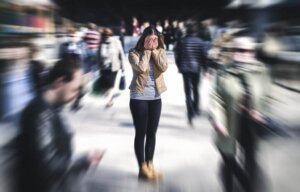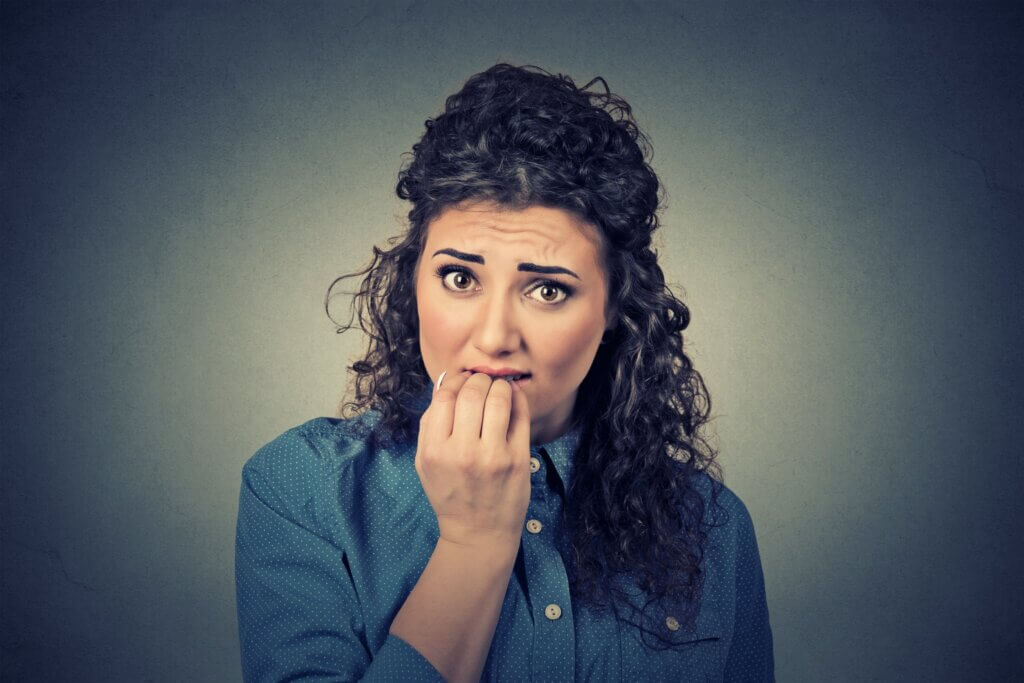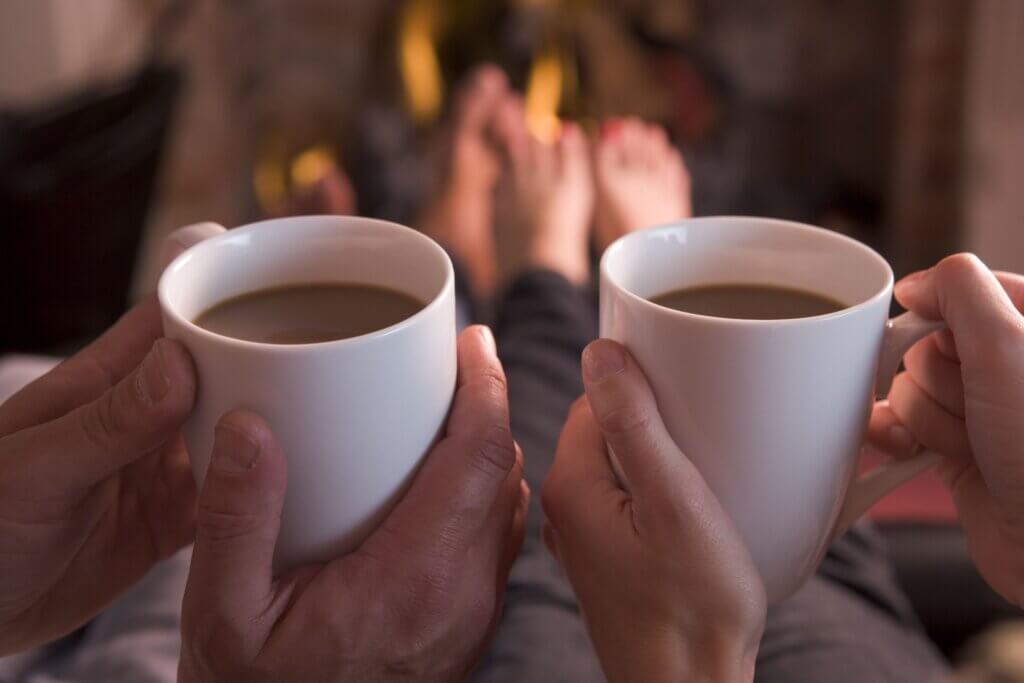The Physical Symptoms of Anxiety

Anxiety is a group of disorders that are characterized by producing fear, anguish, fear, or worry about situations, objects, or activities that shouldn’t arouse these reactions. It’s often associated with psychological symptoms (such as the ones we’ve mentioned), but physical symptoms of anxiety can also be distinguished. Today we’ll teach you what they are and how to counteract them.
There are many types of anxiety. The most well-known and most studied are generalized anxiety disorder, panic disorder, social anxiety disorder, obsessive-compulsive disorder, and specific phobias. Each disorder has its particularities, but they also share several physical symptoms of anxiety in common.
What are the physical symptoms of anxiety?

In general, anxiety disorders are characterized by fear and excessive worry. In itself, this is a psychological reaction, one that’s exaggerated in relation to an action, an object, or a situation. Anxiety not only manifests itself through emotional or psychological signs, but it also manifests itself through physical triggers. The most frequent are the following:
- Difficulty breathing
- Nausea and vomiting
- Digestive problems (pain, constipation, and others)
- Insomnia and other sleep disorders
- Lack of energy
- Muscle tension (may be accompanied by pain or paralysis)
- Increased perspiration
- Increased cardiac frequency
- Shaking chills
- Numbness or tingling in the extremities
- Chest pain
- Blurry vision
- Auditory alterations
These are the main physical symptoms of anxiety, although people can develop many others. Depending on the type and severity of the episode, the signs will manifest with greater or lesser intensity. Their duration is also highly variable, from just a few seconds or minutes or up to several hours. The clinical name for these episodes is somatic anxiety symptoms.
Although they can also manifest in children, the evidence indicates that they’re more frequent in young people over 12 years of age. Experts warn that in many episodes, the patients themselves are unaware of these symptoms, or in any case, they underestimate their intensity or magnitude. They can also end up not relating to them with anxiety, especially when they persist after the episodes.
Attempts have been made to study the way in which anxiety can trigger somatic reactions. It’s generally attributed to what is known as the fight or flight response, and to the physiological changes that occur in the body to ensure its survival. As the researchers point out, this mechanism could also explain the somatic symptoms of depression.
How to control the physical symptoms of anxiety
We’ve already mentioned that many people aren’t aware of these physical manifestations. They’ve dealt with them so much that they’ve become a part of their lives. Therefore, they associate headaches or sweating with other triggers (just to mention two examples). Despite this, there are many ways to deal with the physical symptoms of anxiety, all in favor of well-being.
The first step is to identify the symptoms. Think about whether any of the signs described appear before, during, or after an episode of anxiety, however mild it may be. This way, you’ll be able to establish a causal relationship and discover that, in reality, all these manifest themselves in conjunction with the episode itself.
The way to stop the somatic symptoms of anxiety is by controlling the anxiety itself. This may seem very easy, but as many patients know, it’s more complex than it seems. Many cases are unreceptive to treatment, and most of the time, the anxiety won’t completely disappear. Despite this, you can try the following.
1. Practice exercise every week
There’s evidence that regular exercise is very helpful in relieving episodes of anxiety. You don’t need to develop an intense routine, even short sessions can be very helpful. Start with a training plan adapted to your physical conditions and then gradually increase the intensity according to your achievements, objectives, and time.
2. Reduce the intake of alcohol, coffee, and nicotine

Coffee, alcohol, and nicotine consumption are associated with overstimulation, which may be counterproductive for patients with anxiety. If you frequent any of these, try to reduce your intake, always progressively in order to avoid physical and emotional complications. If possible, make their consumption very sporadic or avoid them altogether if the somatic signs are very intense.
3. Respect the hours of sleep
People who suffer from anxiety often experience sleep disorders. These can also be encouraged by different factors, such as using electronic devices until late at night.
Since we know that lack of sleep can instigate or exacerbate the symptoms of anxiety, it’s best to take care of the number of hours you sleep at night. Make sure these are continuous and not fragmented.
4. Include relaxing activities
Any type of activity that provides you with a certain degree of calm is helpful in coping with the physical symptoms of anxiety. For example, stretching exercises, breathing exercises, listening to music, walking, writing, watching a movie, talking with friends or family, playing with a pet, and so on. Try different alternatives until you find the best one for you.
Of course, complete all of the above with sessions with a specialist in psychology. Not all cases of anxiety require drug treatment, although this can be considered if the episodes are continuous or particularly intense. The important thing is to approach the disorder in a less invasive way to then give way to other options according to the results.
All of the above words have served to exemplify that anxiety doesn’t only have emotional or psychological manifestations. The physical symptoms of anxiety can be very intense, so much so that well-being is compromised. Being aware of them and channeling the means to find a solution should therefore be the norm among diagnosed patients.
Anxiety is a group of disorders that are characterized by producing fear, anguish, fear, or worry about situations, objects, or activities that shouldn’t arouse these reactions. It’s often associated with psychological symptoms (such as the ones we’ve mentioned), but physical symptoms of anxiety can also be distinguished. Today we’ll teach you what they are and how to counteract them.
There are many types of anxiety. The most well-known and most studied are generalized anxiety disorder, panic disorder, social anxiety disorder, obsessive-compulsive disorder, and specific phobias. Each disorder has its particularities, but they also share several physical symptoms of anxiety in common.
What are the physical symptoms of anxiety?

In general, anxiety disorders are characterized by fear and excessive worry. In itself, this is a psychological reaction, one that’s exaggerated in relation to an action, an object, or a situation. Anxiety not only manifests itself through emotional or psychological signs, but it also manifests itself through physical triggers. The most frequent are the following:
- Difficulty breathing
- Nausea and vomiting
- Digestive problems (pain, constipation, and others)
- Insomnia and other sleep disorders
- Lack of energy
- Muscle tension (may be accompanied by pain or paralysis)
- Increased perspiration
- Increased cardiac frequency
- Shaking chills
- Numbness or tingling in the extremities
- Chest pain
- Blurry vision
- Auditory alterations
These are the main physical symptoms of anxiety, although people can develop many others. Depending on the type and severity of the episode, the signs will manifest with greater or lesser intensity. Their duration is also highly variable, from just a few seconds or minutes or up to several hours. The clinical name for these episodes is somatic anxiety symptoms.
Although they can also manifest in children, the evidence indicates that they’re more frequent in young people over 12 years of age. Experts warn that in many episodes, the patients themselves are unaware of these symptoms, or in any case, they underestimate their intensity or magnitude. They can also end up not relating to them with anxiety, especially when they persist after the episodes.
Attempts have been made to study the way in which anxiety can trigger somatic reactions. It’s generally attributed to what is known as the fight or flight response, and to the physiological changes that occur in the body to ensure its survival. As the researchers point out, this mechanism could also explain the somatic symptoms of depression.
How to control the physical symptoms of anxiety
We’ve already mentioned that many people aren’t aware of these physical manifestations. They’ve dealt with them so much that they’ve become a part of their lives. Therefore, they associate headaches or sweating with other triggers (just to mention two examples). Despite this, there are many ways to deal with the physical symptoms of anxiety, all in favor of well-being.
The first step is to identify the symptoms. Think about whether any of the signs described appear before, during, or after an episode of anxiety, however mild it may be. This way, you’ll be able to establish a causal relationship and discover that, in reality, all these manifest themselves in conjunction with the episode itself.
The way to stop the somatic symptoms of anxiety is by controlling the anxiety itself. This may seem very easy, but as many patients know, it’s more complex than it seems. Many cases are unreceptive to treatment, and most of the time, the anxiety won’t completely disappear. Despite this, you can try the following.
1. Practice exercise every week
There’s evidence that regular exercise is very helpful in relieving episodes of anxiety. You don’t need to develop an intense routine, even short sessions can be very helpful. Start with a training plan adapted to your physical conditions and then gradually increase the intensity according to your achievements, objectives, and time.
2. Reduce the intake of alcohol, coffee, and nicotine

Coffee, alcohol, and nicotine consumption are associated with overstimulation, which may be counterproductive for patients with anxiety. If you frequent any of these, try to reduce your intake, always progressively in order to avoid physical and emotional complications. If possible, make their consumption very sporadic or avoid them altogether if the somatic signs are very intense.
3. Respect the hours of sleep
People who suffer from anxiety often experience sleep disorders. These can also be encouraged by different factors, such as using electronic devices until late at night.
Since we know that lack of sleep can instigate or exacerbate the symptoms of anxiety, it’s best to take care of the number of hours you sleep at night. Make sure these are continuous and not fragmented.
4. Include relaxing activities
Any type of activity that provides you with a certain degree of calm is helpful in coping with the physical symptoms of anxiety. For example, stretching exercises, breathing exercises, listening to music, walking, writing, watching a movie, talking with friends or family, playing with a pet, and so on. Try different alternatives until you find the best one for you.
Of course, complete all of the above with sessions with a specialist in psychology. Not all cases of anxiety require drug treatment, although this can be considered if the episodes are continuous or particularly intense. The important thing is to approach the disorder in a less invasive way to then give way to other options according to the results.
All of the above words have served to exemplify that anxiety doesn’t only have emotional or psychological manifestations. The physical symptoms of anxiety can be very intense, so much so that well-being is compromised. Being aware of them and channeling the means to find a solution should therefore be the norm among diagnosed patients.
- Anderson, E., & Shivakumar, G. Effects of exercise and physical activity on anxiety. Frontiers in psychiatry. 2013; 4, 27.
- Chellappa, S. L., & Aeschbach, D. Sleep and anxiety: From mechanisms to interventions. Sleep medicine reviews. 2021; 101583.
- Ginsburg, G. S., Riddle, M. A., & Davies, M. Somatic symptoms in children and adolescents with anxiety disorders. Journal of the American Academy of Child & Adolescent Psychiatry. 2006; 45(10): 1179-1187.
- Kapfhammer HP. Somatic symptoms in depression. Dialogues Clin Neurosci. 2006;8(2):227-239.
- Mallorquí-Bagué, N., Bulbena, A., Pailhez, G., Garfinkel, S. N., & Critchley, H. D. Mind-body interactions in anxiety and somatic symptoms. Harvard Review of Psychiatry. 2016; 24(1): 53-60.
- McLeod, D. R., Hoehn-Saric, R., & Stefan, R. L. Somatic symptoms of anxiety: Comparison of self-report and physiological measures. Biological psychiatry. 1986; 21(3): 301-310.
Este texto se ofrece únicamente con propósitos informativos y no reemplaza la consulta con un profesional. Ante dudas, consulta a tu especialista.







